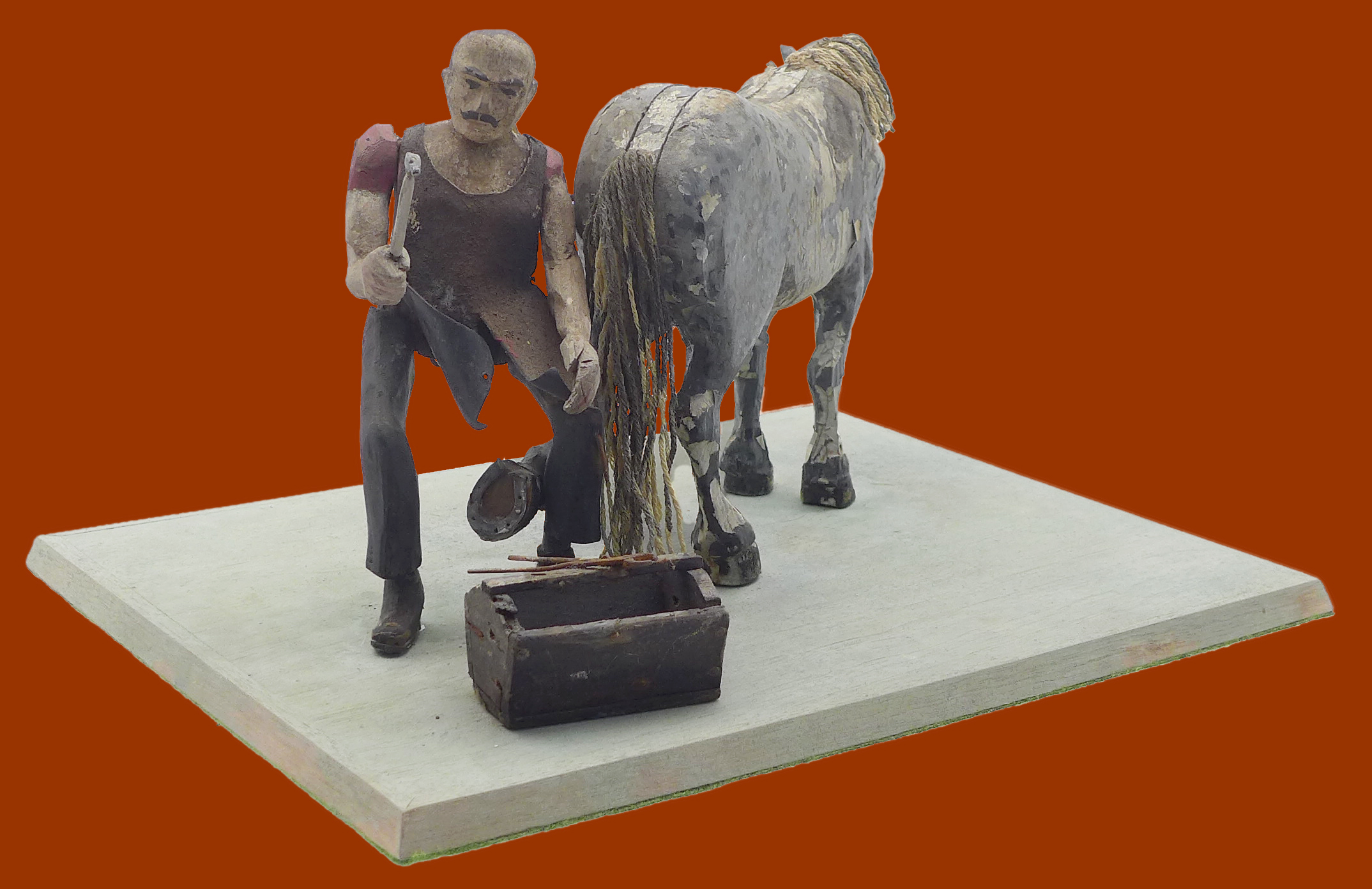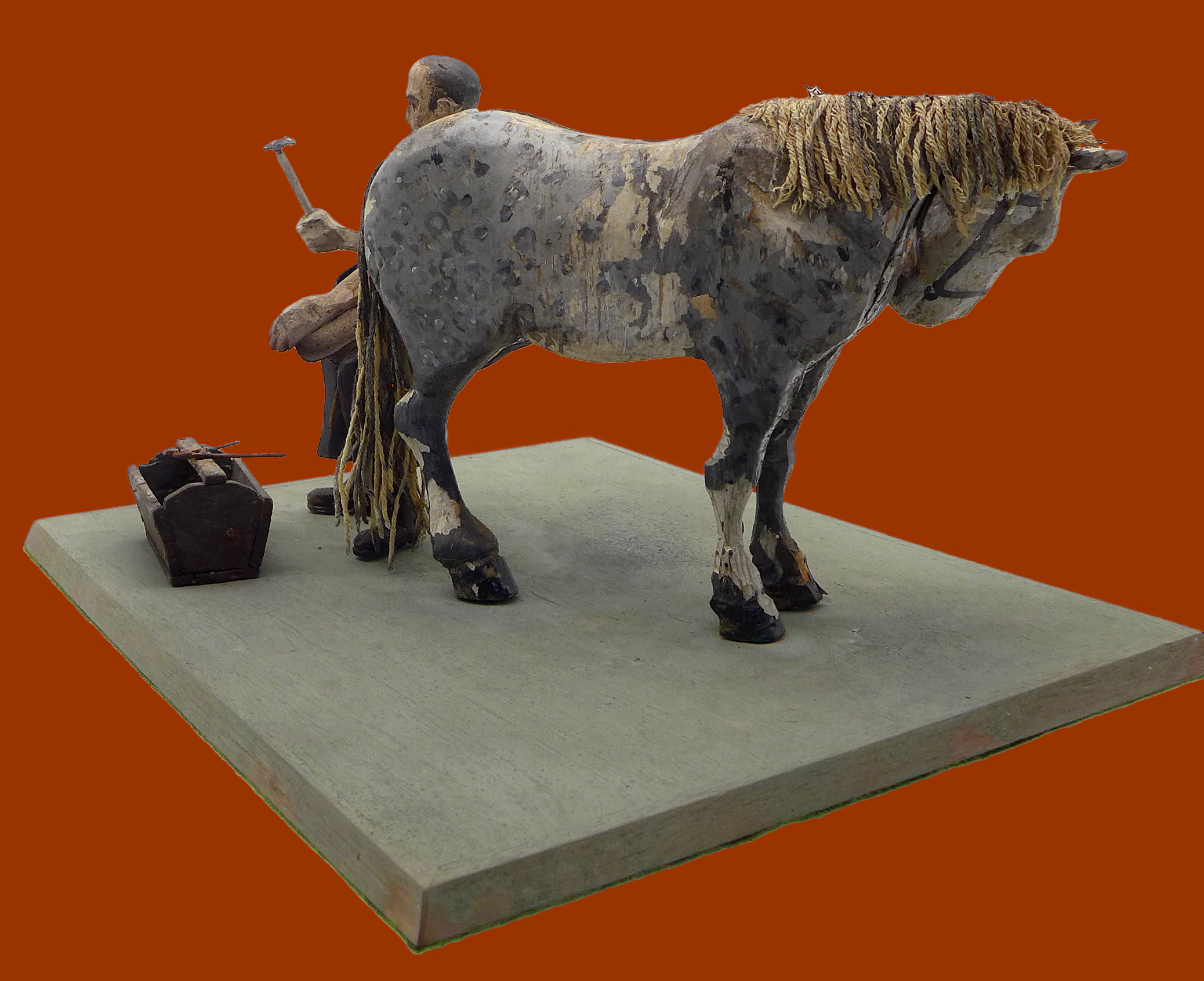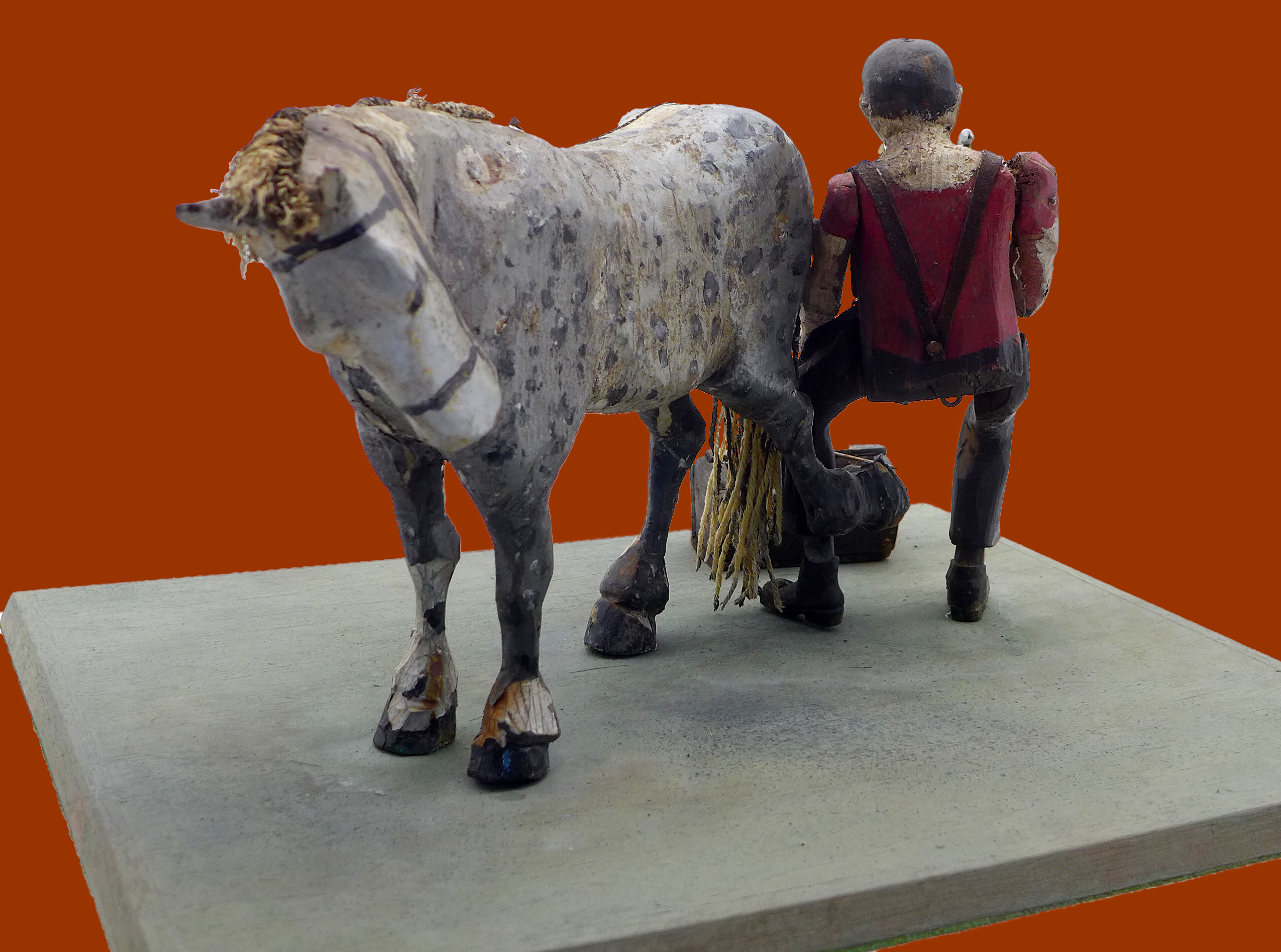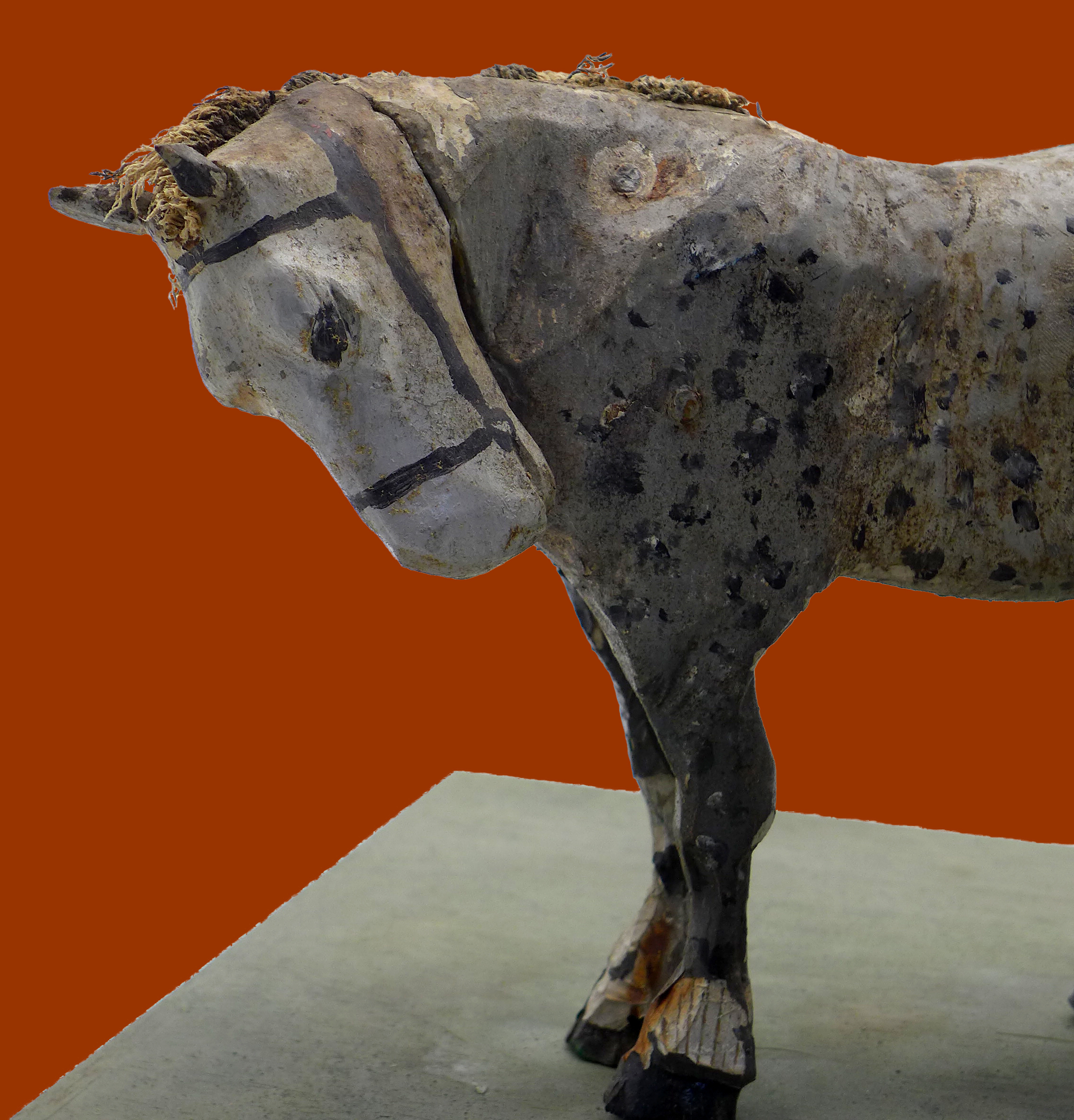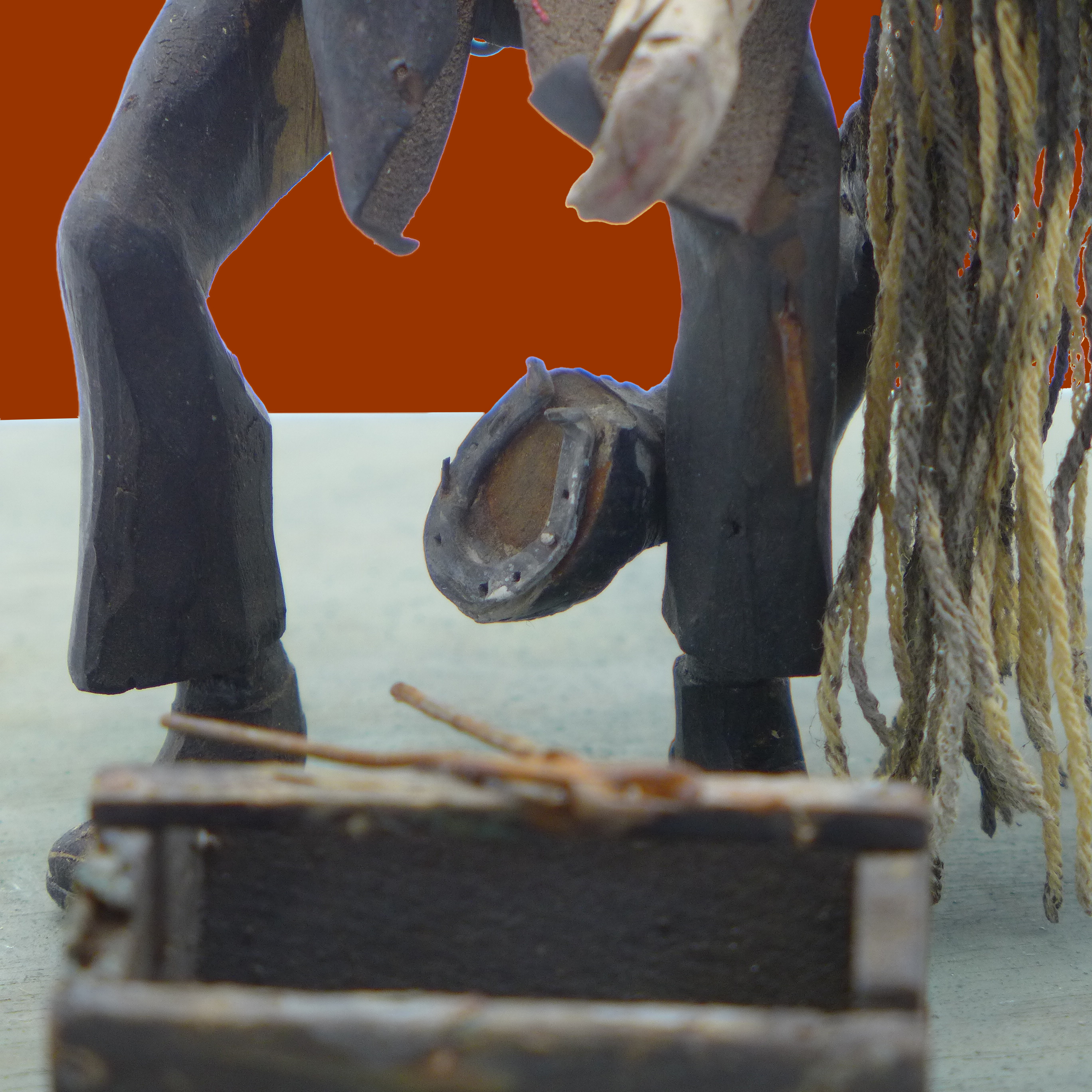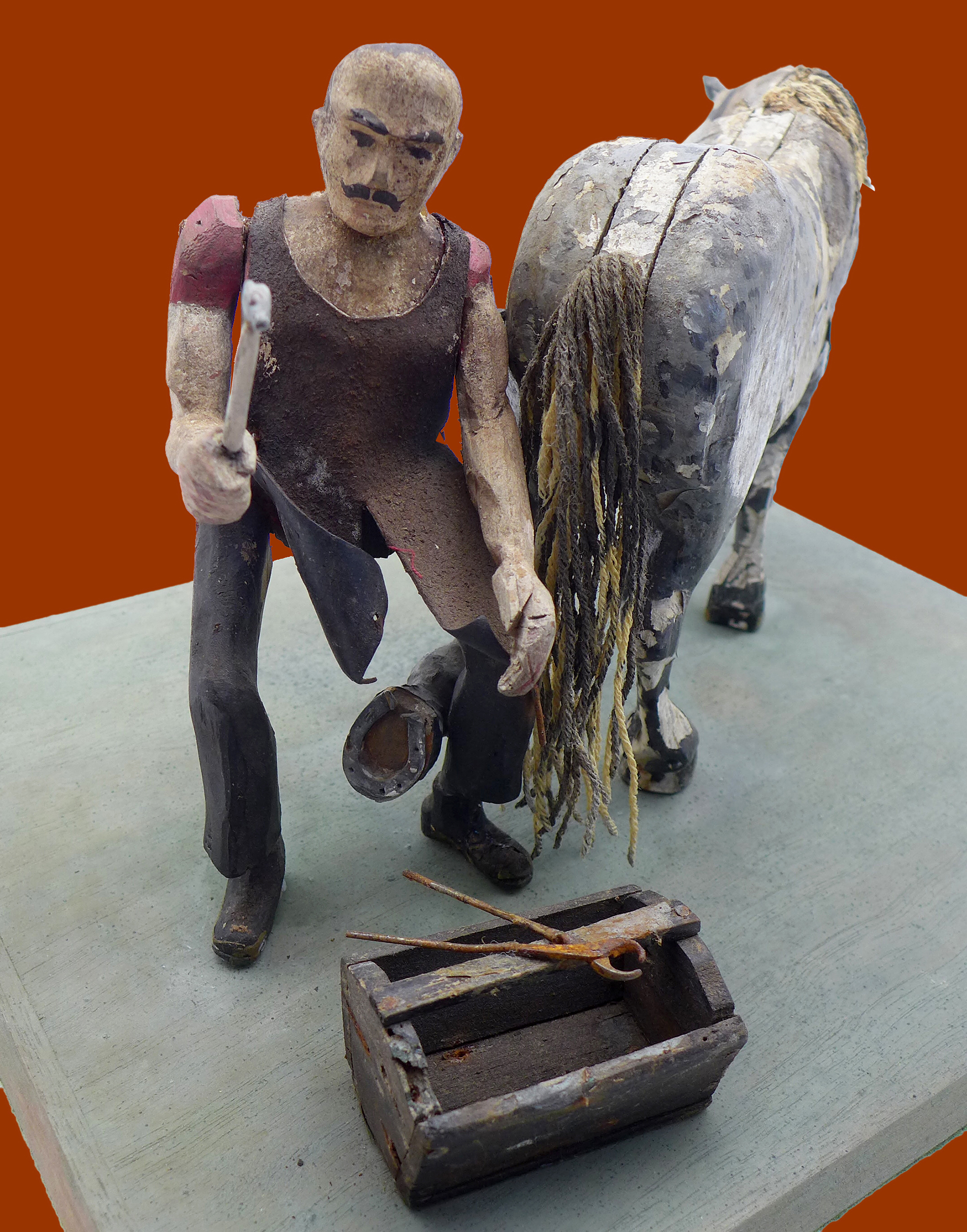
We love this carving. It is so detailed, yet so folky and naïve. The blacksmith (or farrier, since we know he shoes horses but not whether he manipulates the metal further than shaping the shoe to the hoof) squats next to the big, dappled grey horse as he nails the shoe in place. As a former apprentice blacksmith, Peggy can vouch to the fact that a farrier never sits on a stool—she needs to be able to get away quickly if a kick is suddenly launched! The fact that this smithy squats but has no stool shows that the carver knew the subject well. Smithy wears a leather apron (which is a clue pointing to him being a blacksmith--instead of farrier), holds his hammer ready to drive the nail into the hoof and has his toolbox in easy reach with his nail nippers on top. The tiny nippers are even metal. If you look closely at the horse’s upturned foot you will see the tiny nail that is about to be driven in. The horse’s mane and tail are made of jute string that has been partially painted to either depict mud and dirt as if the horse were rolling in the mud prior to being brought out for shoeing (a favorite thing to do when the horses see the farrier drive up), or to depict her mane and tail as multi-colored like her body. The smithy’s arms and legs are pegged but do not articulate. Man and horse are connected with a peg to keep them close. The sculpture has taken a few knocks in its lifetime — as is befitting a real blacksmith. The base has been replaced, one of the blacksmith’s feet is repaired. The handle of the hammer is replaced, the toolbox has a small piece of missing wood on the edge that has been darkened just a bit to fit in. The horse has some missing paint which I personally love because it gives her more colors. One of the front hooves has a bit of a loss of paint and possibly a sliver of wood. We simply adore this late 19th to early 20th century piece of folk art! The base measures 11” x 13 ¾” and the horse is about 7” tall x 9 ½” long.
#6817 $1150

